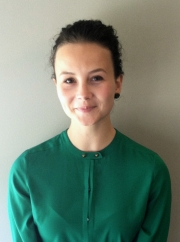Posted on July 28, 2014
Source: Anna Goddu, 2014 Baltimore HIV/AIDS Scholar

I was thrilled to join the Baltimore HIV/AIDS Scholars program this summer and to be conducting a qualitative research project on first adolescent same-sex sexual experiences with Dr. Renata Arrington-Sanders. Our work focuses on young African American men (ages 15-19) who are living in Baltimore and the surrounding area. While this community of young men is burdened by high rates of HIV/AIDS and other sexually transmitted infections (STIs), there is little work that seeks to understand sexual development and sexual health in this population, and how the first sexual experiences during these adolescent years may impact sexual health. Dr. Sanders and her team are following fifty young men for a year, conducting four in-depth interviews with each--a huge amount of data! It’s been inspiring to see how committed Dr. Sanders and her team are to really get to know these young men and thoroughly understand their lives.
I have been struck with how these young men have to simultaneously transition through adolescence and become more accountable for their decisions, while facing challenges of most urban youth, which often includes unstable family lives, unsafe neighborhoods, financial need and transient living situations. Moreover, they often experience anxiety, stigma, or social isolation because of their sexual minority status. Some of them are HIV+, and need to manage their daily regimen of medication. We know the best thing, for all of these young men, is to keep them in care and help them develop good relationships with their providers so they can manage their health and, if needed, their HIV treatment.
For my CFAR project, I am seeking to understand how these young men experience their first same-sex sexual experiences; in particular, what makes them both physically and emotionally satisfying. How one experiences satisfaction is based on what one expects, as well as how one interprets the experience itself.
I am conducting a thematic analysis of interview transcripts to learn how these young men describe their satisfaction and expectations of their very first sexual experiences with other men. First, I read the transcripts to gain a better understanding of how the participants described their experiences. Then, I examined pre-established codes and looked at themes that had emerged from the data. I worked with Dr. Sanders and her team to develop a codebook that re-defined themes related to expectation and satisfaction, and then further, examined the transcripts for additional sub-codes that exemplified experiences of physical and emotional satisfaction. I subsequently coded the 50 baseline interviews and Dr. Sanders coded 20% of the interviews to insure our codes match. I am now starting to group the codes into categories and draw conclusions for the themes that emerged. It’s been great to learn more about this qualitative methodology from Dr. Sanders and her team, and to dive deeply into the interviews in order to understand these young men and their sexual experiences.
Our hope is that, by understanding how these young men think about their satisfaction with sexual experiences, we can expand our analysis to explore the decisions about risk based on satisfaction. For example, if a young man is not feeling physically satisfied, will he choose to use a condom because he finds that condoms improve his pleasure? If a young man is seeking to feel emotionally close to his partner, will he choose not to use a condom, because he feels it is a barrier to fully experiencing emotional satisfaction? These are questions we can only fully understand by hearing from the young men themselves. Ultimately, this kind of research will allow us to design effective interventions to reduce risk of HIV and other STIs and promote healthy sexual lives in these young men that are in great need of public health programs that include how sexual experiences also impact risk behavior.